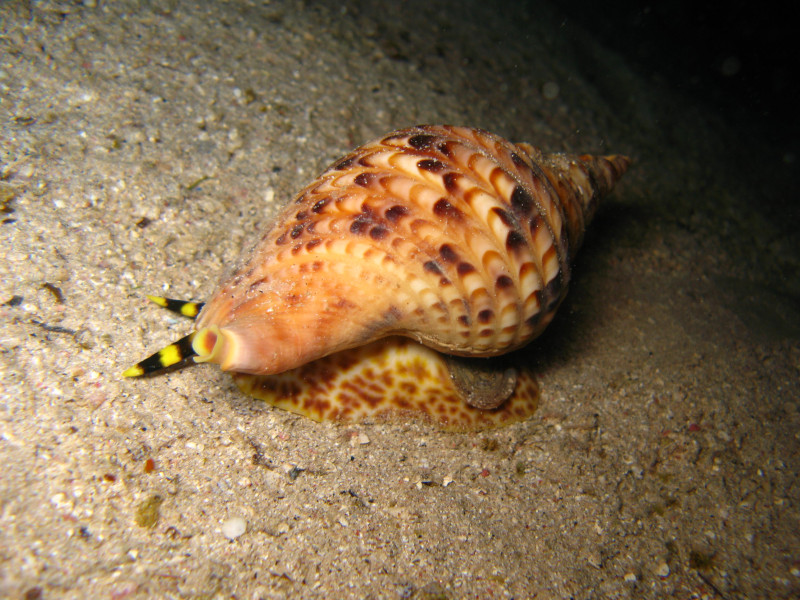Giant Triton Facts
- The fully deserved term of Giant Triton serves as one of the common names for a particularly impressive variety of sea snail. However, this marvel of Nature also goes by another, similar common name. That’s the equally fitting name of the Triton’s Trumpet.
- Among professional researchers, though, this remarkable gastropod holds yet another title. That happens to be the somewhat hard to pronounce Charonia tritonis. But, by whatever label one uses, it’s an amazing member of its genus.
- This wondrous creature also holds a status apart from many of its brethren. That’s because, unlike many related species, it appears to be maintaining a sufficiently stable population base for the moment. This fortunate situation extends throughout its range.
- As a result of this, the IUCN currently has no listing for the beautiful Giant Triton. Any such listing would appear on the organization’s Red List of Threatened Species. The impressive gastropod does, however, presently appear in the Catalogue of Life.
- It nonetheless remains considered to be at some potential risk, in the minds of many researchers. This consideration partly occurs due to the dangers of habitat loss. But, it’s greatest threat, like most species, comes in the form of ongoing climate change.
Related Articles
Giant Triton Physical Description
The magnificent Giant Triton easily earns its distinctive common name. That’s due to the fact that it ranks as one of the largest species of mollusk within its native range. In point of fact, this remarkable ocean creature often attains a length of as much as 24 in (60 in).
Yet, the sheer size of its amazing shell isn’t the only visually impressive characteristic of its protective covering. That holds true due to the fascinating design of this natural defensive structure. Evolution blessed it with a marvelous spindle-shaped appearance.
The exact coloring of this also varies quite significantly between individual specimens of the unique animal. The basic pattern consists of varying shades of white and a yellowish-brown. The precise combination, however, remains unique to each example of Giant Triton.
- Kingdom: Animalia
- Phylum: Mollusca
- Class: Gastropoda
- Order: Littorinimorpha
- Family: Charoniidae
- Genus: Charonia
- Species: C. tritonis
Giant Triton Distribution, Habitat, and Ecology
The breathtaking Giant Triton also stands out from similar gastropods in terms of its territory. Thus, it holds another advantage over related species. That’s true because of the fact that this member of its amazing genus inhabits a somewhat broad range of the world.
In point of fact, the truly mesmerizing mollusk exists in many of the temperate and tropical waters throughout the world. Yet, it appears to be the most prevalent in the Indo-Pacific region. This presence even includes the region of the globe known as the Red Sea.
Although its range of habitation is relatively extensive, its choice of habitat remains quite restricted. Like many of its kind, the species primarily prefers to make its home in areas of coral reef. Nonetheless, individuals will also occasionally move into open areas.
The incredible Giant Triton also ranks as a highly active predator. Its primary prey usually consists principally of other mollusks and starfish. It remains one of the few species known to actively prey upon the large and highly venomous Crown-of-thorns starfish.
This fascinating species also evolved remarkable strategies and tools for its feeding efforts. It will frequently utilize its file-like radula to saw open the protective armor of its prey. Then it uses its saliva, which contains a paralytic agent, to immobilize the hapless victim.
Unlike most similar species of gastropod, this one did not evolve as a hermaphrodite. It reproduces via sexual means, with the newly born larvae being planktonic in nature. These float on the ocean currents for about three months before settling on the ocean floor.
Species Sharing Its Range
Check out our articles on 6 Breathtaking Raptors, Indian Bullfrog, Christmas Island, Darwin’s Orchid, Numbat, Violet Carpenter Bee, Flatback Sea Turtle, Black-and-white hawk-eagle

